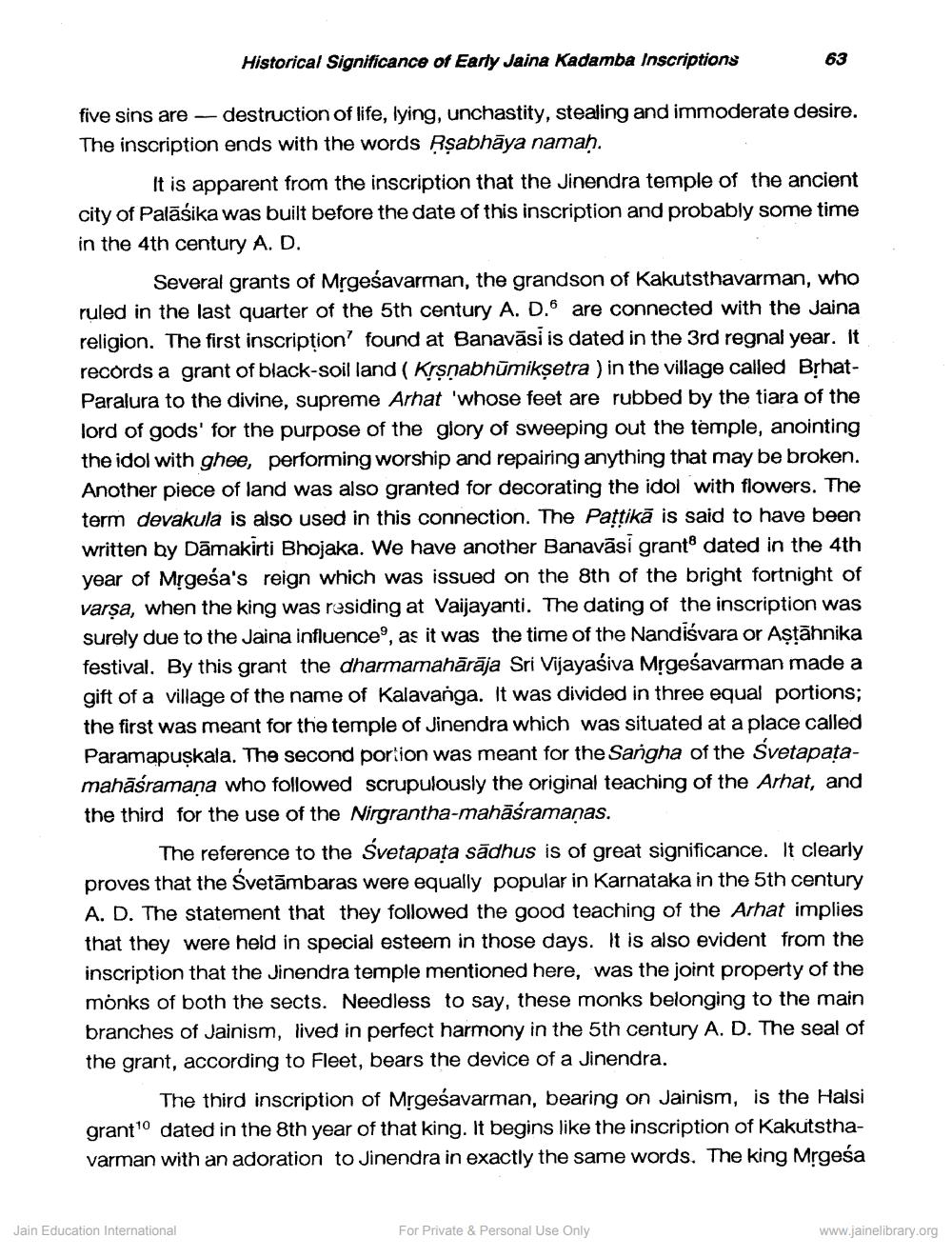________________
Historical Significance of Early Jaina Kadamba Inscriptions
63
five sins are — destruction of life, lying, unchastity, stealing and immoderate desire. The inscription ends with the words Rşabhāya naman.
It is apparent from the inscription that the Jinendra temple of the ancient city of Palāśika was built before the date of this inscription and probably som in the 4th century A. D.
Several grants of Mrgesavarman, the grandson of Kakutsthavarman, who ruled in the last quarter of the 5th century A. D.6 are connected with the Jaina religion. The first inscription' found at Banavāsi is dated in the 3rd regnal year. It records a grant of black-soil land ( Krsnabhūmiksetra ) in the village called BrhatParalura to the divine, supreme Arhat 'whose feet are rubbed by the tiara of the lord of gods' for the purpose of the glory of sweeping out the temple, anointing the idol with ghee, performing worship and repairing anything that may be broken. Another piece of land was also granted for decorating the idol with flowers. The term devakula is also used in this connection. The Pattikā is said to have been written by Dāmakirti Bhojaka. We have another Banavāsi grante dated in the 4th year of Mrgeśa's reign which was issued on the 8th of the bright fortnight of varsa, when the king was residing at Vaijayanti. The dating of the inscription was surely due to the Jaina influence", as it was the time of the Nandiśvara or Astāhnika festival. By this grant the dharmamahārāja Sri Vijayasiva Mrgeśavarman made a gift of a village of the name of Kalavanga. It was divided in three equal portions; the first was meant for the temple of Jinendra which was situated at a place called Paramapuskala. The second portion was meant for the Sangha of the Svetapatamahāśramana who followed scrupulously the original teaching of the Arhat, and the third for the use of the Nirgrantha-mahāśramanas.
The reference to the Svetapata sādhus is of great significance. It clearly proves that the Svetāmbaras were equally popular in Karnataka in the 5th century A. D. The statement that they followed the good teaching of the Arhat implies that they were held in special esteem in those days. It is also evident from the inscription that the Jinendra temple mentioned here, was the joint property of the monks of both the sects. Needless to say, these monks belonging to the main branches of Jainism, lived in perfect harmony in the 5th century A. D. The seal of the grant, according to Fleet, bears the device of a Jinendra.
The third inscription of Mrgesavarman, bearing on Jainism, is the Halsi granto dated in the 8th year of that king. It begins like the inscription of Kakutsthavarman with an adoration to Jinendra in exactly the same words. The king Mrgesa
Jain Education International
For Private & Personal Use Only
www.jainelibrary.org




